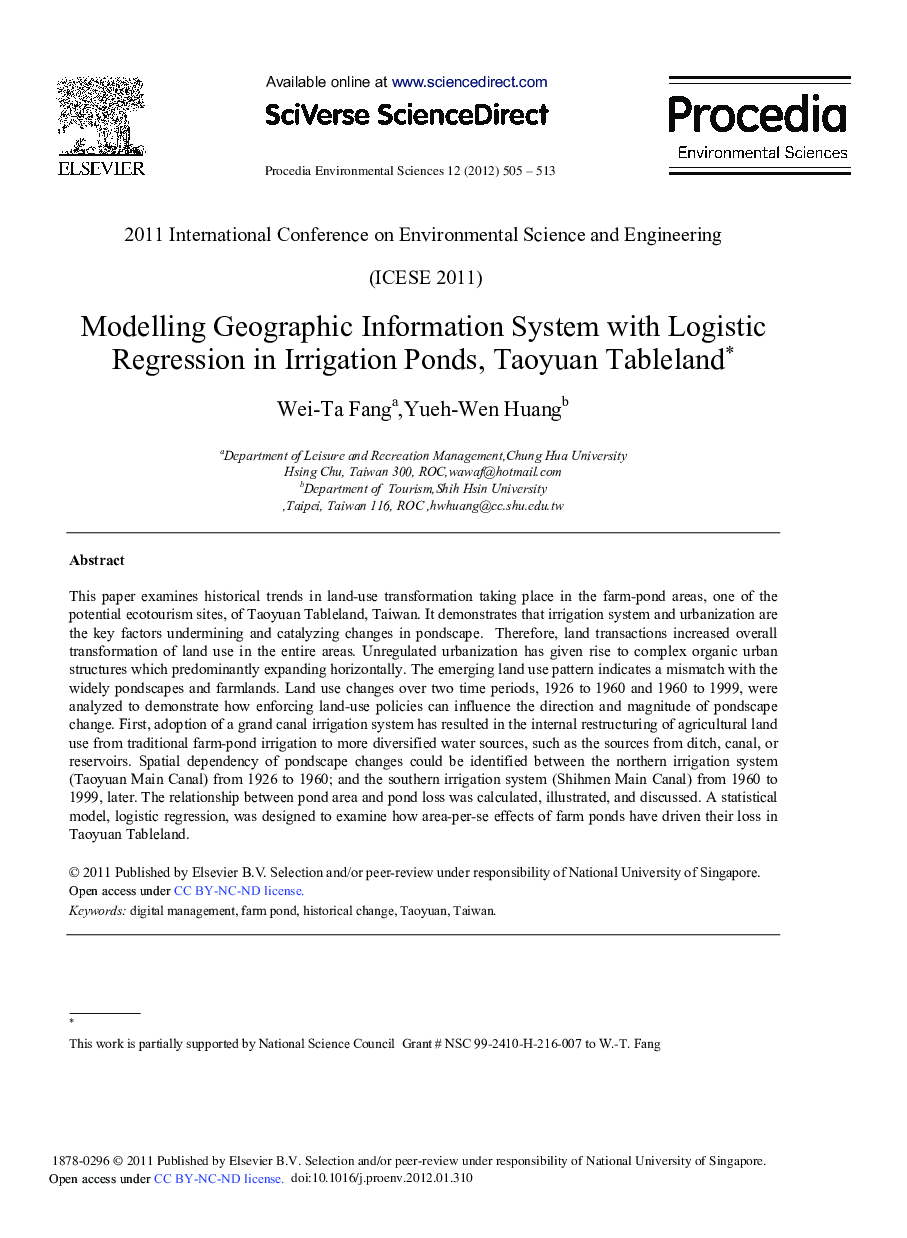| Article ID | Journal | Published Year | Pages | File Type |
|---|---|---|---|---|
| 4403192 | Procedia Environmental Sciences | 2012 | 9 Pages |
This paper examines historical trends in land-use transformation taking place in the farm-pond areas, one of the potential ecotourism sites, of Taoyuan Tableland, Taiwan. It demonstrates that irrigation system and urbanization are the key factors undermining and catalyzing changes in pondscape. Therefore, land transactions increased overall transformation of land use in the entire areas. Unregulated urbanization has given rise to complex organic urban structures which predominantly expanding horizontally. The emerging land use pattern indicates a mismatch with the widely pondscapes and farmlands. Land use changes over two time periods, 1926 to 1960 and 1960 to 1999, were analyzed to demonstrate how enforcing land-use policies can influence the direction and magnitude of pondscape change. First, adoption of a grand canal irrigation system has resulted in the internal restructuring of agricultural land use from traditional farm-pond irrigation to more diversified water sources, such as the sources from ditch, canal, or reservoirs. Spatial dependency of pondscape changes could be identified between the northern irrigation system (Taoyuan Main Canal) from 1926 to 1960; and the southern irrigation system (Shihmen Main Canal) from 1960 to 1999, later. The relationship between pond area and pond loss was calculated, illustrated, and discussed. A statistical model, logistic regression, was designed to examine how area-per-se effects of farm ponds have driven their loss in Taoyuan Tableland.
